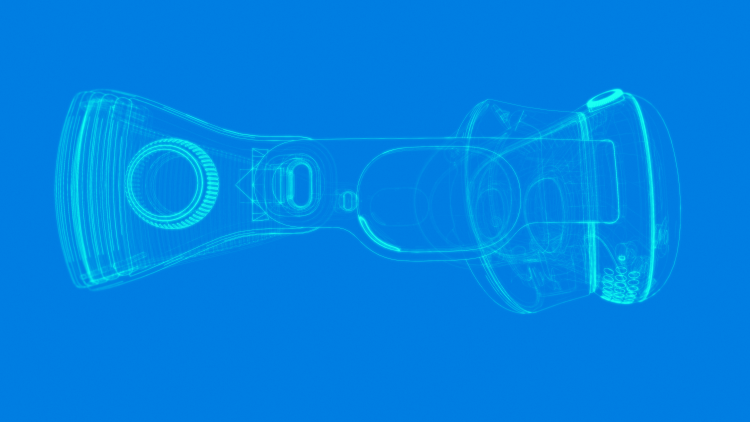We are a group of creative people who help organizations make their ideas beautiful.
Visionary: Apple’s Legacy and Our Future
A reality check on the new wave of spatial computing and Paradowski’s award-nominated launch title
When I first interviewed at Paradowski in 2018, I made some bold predictions about Apple’s entry into the immersive industry, which even then was long-rumored.
Apple would soon succeed where others had failed, I argued, in terms of hardware, software integration, UX, and, critically, marketing. Apple’s brand confers prestige and users would flock to it. Their stance on data privacy would engender greater trust than the competition. They would charge a mint for whatever they built and users would gladly pay up – both because it would be manifestly great, and because “it’s Apple.”
Or so the theory went, on and on, as the largest company in the world researched spatial computing behind closed doors for more than a decade. In that time, Paradowski grew into an award-winning immersive studio working for top global clients like Meta, Verizon, Sony, Mozilla, Sesame Workshop, adidas, Purina and more. And every year, like clockwork, the rumors of game-changing WWDC device announcements came and went, invariably followed by reports of unexpected delays, or even entirely canceled product lines.
But finally, after a formal product announcement early last year, Apple Vision Pro will be here to see and experience this Friday, February 2.
All told, the story is more complex than the idealized assumptions I spouted in my interview. Nevertheless, it’s an inflection point in the history of technology that we at Paradowski have spent years predicting and preparing for.
Learning from “the iPhone moment”
When Apple released the iPhone in 2007, it was far from a sure bet. A computer company with 4.6% market share that had nearly gone bankrupt the preceding decade was launching a cellular device — big whoop. Many of their design decisions were unproven, as was their sky-high price point.
Yet developer and creative communities saw long-term potential, seized on it, and created incredible business value and monumental design work over the last fifteen-plus years. Some of the largest and wealthiest companies in the world today arose from that boom, Apple included, and many more are enabled by it to this day.
Apple Vision Pro arrives amid remarkably similar circumstances and public skepticism. Just as the iPhone sold barely a million units in its first year and was initially derided by business leaders as a flop, AVP won’t become a mass market device overnight, either.
But its trajectory is clear: comparable first-year sales followed by outsized long-term impacts.
We’re talking about the next exponential growth arc in consumer hardware.
There is no other path forward for mass market devices – no logical alternative future form factor for technology besides augmenting human vision with spatial computing and AI. For all the hype around ChatGPT and the like, any AI agent that can see what you see and make inferences about the physical world in real-time should be dramatically more useful than one you have to manually dictate prompts to. The convergence of these technologies is inevitable, and their utility will no longer be in doubt at that point.
So ignore any pearl-clutching about the first-generation device’s shortcomings. Yes, absolutely every aspect of this product will need dramatic improvement. The first iPhone had just 160,000 pixels, while today’s packs in more than 3,000,000 – we’ll see the same 20x gains across Apple Vision Pro’s hardware and software stack, likely on an accelerated timeline. Version 1.0 is a necessary stepping stone, not the end goal.
What’s critical – and what created truly incredible outcomes for so many businesses and brands in the very recent past – is figuring out how to operate on the dominant consumer hardware of the future now.
To that end, our team has already created an award-nominated original launch title for Apple Vision Pro.
The Escape Artist
Our immersive escape room experience, The Escape Artist, will be available for free on Apple Vision Pro at launch on February 2. In this expansive narrative about the creative process, you play as the elusive muse of an artist trapped in their own work, deciphering hints and solving puzzles to find inspiration in an increasingly surreal world.
First released on Meta Quest in October 2023 at Augmented World Expo EU and featured on the Quest browser homepage, more than 200,000 players in 168 countries have logged 25,000+ hours in the game so far. Last week it received four nominations from The WebXR Awards including for Game of the Year, Developer of the Year and overall Experience of the Year. And because of the cross-platform WebXR standard, we were able to develop features supporting Apple Vision Pro before a dev kit was even released.
The web or the walled garden
Building with WebXR also means our fully-immersive content avoids any install process or high-friction App Store curation. Instead, we distribute through the Safari browser pre-installed on every device, so any experience is just a link away.
Paradowski has been an advocate for and pioneer of this platform for years, doing Webby-winning client work as well as creating incredible original content such as Above Par-adowski Mini-Golf, our previous Game of the Year winner in 2022.
The alternative to the browser is the native pipeline, whether developing in the Unity game engine or directly in Xcode with SwiftUI and Reality Composer. These production tools have pros and cons, but generally make development more efficient and apps more performant – at the cost of new distribution challenges via Apple’s App Store.
Compared to others, the App Store is heavily curated, with each and every version of every single app subject to review by Apple’s team according to their sometimes-arbitrary, sometimes-inconsistent policies. They are not obligated to approve anything, nor explain their decision-making. Even with this restrictive process, the iOS App Store is also fairly saturated, making app discovery another obstacle. If someone does manage to find and install your app, Apple will get their cut, up to 30%.
It’s important to consider these trade-offs when exploring spatial computing. We’re experienced in both pipelines and choose based on what’s in our clients’ best interests.
The foreseeable future
It’s still so early. In truth, we don’t know if we’re closer to “the Apple II moment” or “the iPhone moment” in terms of broad consumer adoption for immersive technology.
But we know what direction we’re headed in, along with the increasingly rapid pace of technological innovation. We predict rich first-mover advantages for companies and brands who invest early, just as with the rise of smartphones or the personal computer before them.
It’s an incredibly exciting time at Paradowski, years in the making, and we’re proud to be early leaders in the spatial computing community. Reach out if you'd like to learn more.





